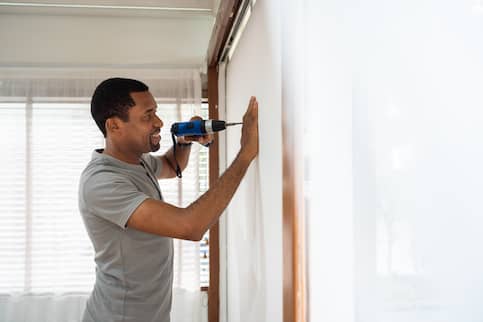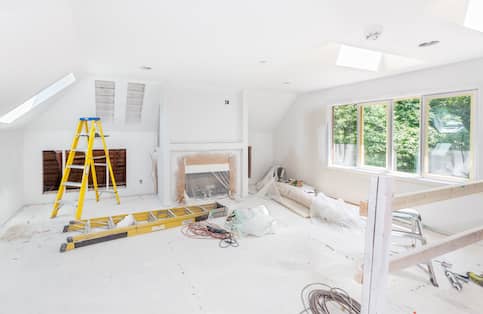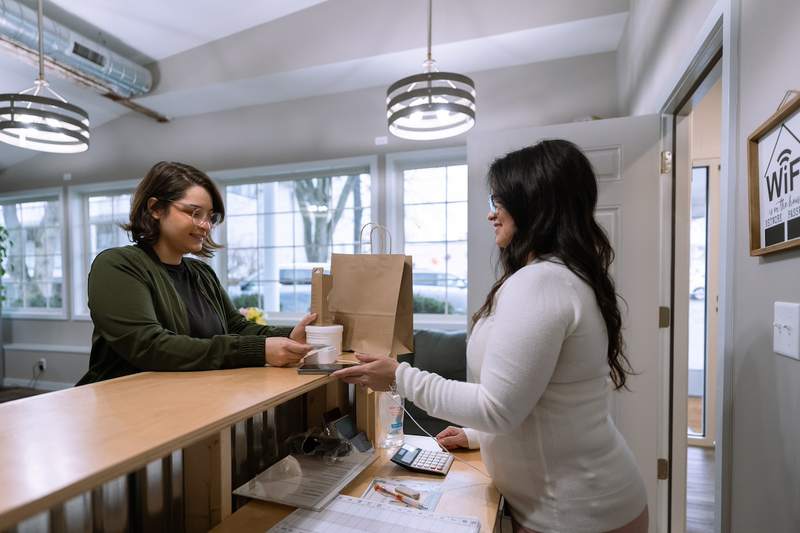Whether you need to make urgent home repairs or want to remodel your kitchen, home improvement projects can be expensive.
If you have little equity or need fast funding, a personal loan is a customizable solution to fund your project in as little as one business day.
Find out what you need to know about personal loans home improvement financing.
Key Takeaways:
- Personal loans offer fast funding and don’t require equity, making them a flexible way to finance home improvements.
- Unlike other home renovation loan options, like home equity loans and home equity lines of credit (HELOCs), personal loans don’t require collateral or equity.
- When choosing a personal loan for remodeling or repairs, consider the APR and all fees to find a balance between affordable payments and the total cost of borrowing.
What Is A Personal Loan For Home Improvement?
A personal loan is an accessible way to finance home renovations and repairs.
Unlike home equity loans and home equity lines of credit (HELOCs), they’re unsecured loans, so they don’t require collateral. Another benefit is that personal loans don’t require equity.
While borrowers can use personal loans for any purpose, their flexibility makes them a popular financing solution for home renovations.
How do personal loans work?The borrower receives a lump sum up front, which they can use for any home repair or renovation project.
A personal loan can fund cosmetic updates, urgent repairs or green energy updates. You can also use a personal loan to remodel your kitchen, add a home gym or refresh your landscaping. Home renovations can increase home value and boost curb appeal.
What’s Your Goal?
Buy A Home
Discover mortgage options that fit your unique financial needs.

Refinance
Refinance your mortgage to have more money for what matters.
Tap Into Equity
Use your home’s equity and unlock cash to achieve your goals.
Is A Personal Loan Right For Me?
Considering a personal loan for house upgrades?
Qualifying for a personal loan can be quick and funding can be fast. But these loans have higher interest rates than others. Interest rates can be as high as 36%, which is higher than some credit cards.
Since personal loans don’t require collateral, lenders charge higher interest rates to cover their lending risk. A strong credit history can help your lender see you as a low-risk borrower for a personal loan. If you have excellent credit, you could qualify for a loan with a 7% or 8% interest rate.
Same-day funding may be available, but funding can take a few days to a week.
A personal loan may be ideal if:
- You have a good credit score and can qualify for a competitive rate
- You think you can pay the loan back relatively quickly
- You have 15% or less equity in your home
- You need to borrow only a few thousand dollars
Ready To Become A Homeowner?
Get matched with a lender that can help you find the right mortgage.
Pros And Cons Of Using A Personal Loan
Let’s review some personal loans home improvement pros and cons:
Pros
- Competitive interest rates: If you’re a borrower with good credit, you can get a personal loan with a competitive interest rate. Paying your debts on time and having low credit utilization could improve your credit standing.
- Flexible repayment terms: Personal loan terms typically range from 2 to 7 years. When looking for a loan with a repayment period that fits your monthly budget, remember to consider total interest costs.
- Predictable payments: Most personal loans have a fixed interest rate, so payment amounts remain the same.
- Fast funding: If you choose a lender that works quickly, you can get a personal loan within a week. Other loans can take 2 weeks to 2 months.
- Unsecured debt: Personal loans are unsecured loans, so they don’t require collateral. If you fall behind on payments, you won’t risk losing your home to foreclosure.
- Lower closing costs: Personal loans usually have an origination fee and closing costs of 1% – 10% of the loan amount, but some lenders may waive the origination fee. Other loan products have closing costs ranging from 2% to 6%.
Cons
- Prepayment penalties: Some lenders charge a penalty if a borrower repays their loan early. This fee compensates for lost interest. However, some lenders offer personal loans without a prepayment penalty.
- Higher interest rates: To compensate for the lack of collateral, unsecured loans have higher interest rates compared to secured loans.
- Stricter eligibility requirements: Because personal loans incur more risk for lenders, qualification standards are often higher for borrowers.
Take The First Steps To Buying A Home
Find a lender that will work with your unique financial situation
When To Use Personal Loans For Home Improvements
Since funding timelines for home equity loans, home equity lines of credit (HELOCs) and refinancing can be lengthy, personal loans can be suitable for urgent repair and home improvement projects that require fast funding.
Here are two examples:
Emergency home repairs: If you have a roof leak and need to make immediate repairs to prevent further damage to your property, you won’t want to risk waiting months to hear back about a home equity loan or HELOC application. A personal loan can offer funding within days so you can begin repairs quickly to minimize further damage.
Home renovations: If you want to renovate your home before selling to increase its market value, improvements like a bathroom remodel could attract more buyers and result in a higher return on investment. A personal loan can provide quick funding so you can start renovations sooner.
How To Compare Home Improvement Loans
Here are some personal loan features to compare:
Annual percentage rate (APR): Personal loan APRs typically range from 6% to 36%, depending on credit standing. Loans are available through online lenders, credit unions and banks. Credit unions tend to offer more favorable terms and lower rates.
Fees: Compare fees, including the origination fee and closing costs. Typically, these fees are 1% – 10% of the loan amount. However, some lenders may waive the origination fee. Check to see if there is a prepayment penalty for paying off your loan early.
Payment amount: Monthly payments vary depending on interest rate and loan term. Ensure you can afford the payment amount before signing.
Loan amount: Consider your funding needs and compare loan amounts to ensure a personal loan for remodel or renovations is right for you. Loan amounts typically range from $1,000 to $50,000. Personal loans generally are capped at $100,000.
Loan term: It’s common to see terms ranging from 2 to 7 years. A lengthy term can make payments more affordable, but you’ll pay more interest.
Ability to add a co-signer: Not all lenders allow a co-signer. However, adding a co-signer could help you qualify for a personal loan and may result in more favorable terms.
Ready to apply? Here’s how to get a personal loan.
Other Ways To Finance Home Improvements
Here are some personal loan alternatives:
Cash-Out Refinance
A cash-out refinance lets you convert your home equity into cash by replacing your original mortgage with a new one. The terms and rates will differ from your original loan, meaning your new mortgage could have a higher interest rate.
To qualify for a cash-out refinance, borrowers usually need:
- A credit score of at least 620
- A debt-to-income ratio (DTI) of 50% or less
- At least 20% home equity
You can pay your closing costs upfront or roll them into the new mortgage, but the latter option will increase your loan balance and can impact how much cash you receive.
Credit Cards
A credit card may be ideal when paying for less costly home repairs.
If you already have a credit card, you’ll have instant purchasing power. However, applying for and receiving a credit card can take several weeks.
A rewards credit card can earn you cash back on your home project. For example, you’d earn $100 after paying for a $5,000 home renovation with a 2% cash back credit card.
Remember, you’ll pay interest if you carry a balance. Since credit card interest rates are typically over 20%, this financing option isn’t recommended unless you can afford to pay your balance off immediately.
Home Equity Lines Of Credit (HELOCs)
A HELOC is a second mortgage that turns your home equity into a revolving line of credit that you can borrow against for 5 to 10 years before repaying the balance. Typically, you need at least 15% to 20% equity in your home to qualify for a HELOC.
A HELOC lets you borrow against your available equity, up to a maximum amount. Borrowing limits vary by lender, but you can usually only borrow a maximum of 80% of your home value.
A HELOC can enable you to finance renovations over several years without needing to repay the balance immediately. You’ll owe interest only during the draw period, which is tax deductible when the funds are used for home improvements.
After the draw period, you’ll have 10 to 20 years to repay the principal. HELOCs can have variable interest rates, so your monthly payments may increase. Since HELOCs provide a line of credit, they’re not ideal for one-off projects.
Remember, your home is used as collateral, so defaulting on a HELOC can lead to foreclosure.
Home Equity Loans
Home equity loans provide a lump sum of money. You typically need at least 15% home equity to qualify for this loan.
They have fixed interest rates and predictable payments, which makes them ideal for renovation projects where a substantial amount of funding is required.
Interest paid on home equity loans may be tax deductible.
Home equity loan debt becomes a second mortgage alongside your original mortgage. So, you’ll be responsible for two mortgage payments. Lenders assess your home’s current value when providing home equity loans and HELOCs.
If the real estate market is down, you may have less equity than you think. However, a soaring market can help boost your equity. Borrowing only what you need can help avoid an underwater mortgage if the housing market declines.
Since your property is used as collateral, defaulting on a home equity loan can result in foreclosure.
Related: Six Types Of Home Improvement Loans
Personal Loan For Home Improvement FAQ
The Bottom Line
A personal loan for remodel and repair is a flexible and accessible financing solution. Consider how higher interest rates and shorter repayment terms can impact your wallet.
Increasing your credit score before applying could improve your chances of qualifying for a personal loan with favorable terms.
Ready to begin your home improvement project? Apply for a personal loan today.

Ben Shapiro
Ben Shapiro is an award-winning financial analyst with nearly a decade of experience working in corporate finance in big banks, small-to-medium-size businesses, and mortgage finance. His expertise includes strategic application of macroeconomic analysis, financial data analysis, financial forecasting and strategic scenario planning. For the past four years, he has focused on the mortgage industry, applying economics to forecasting and strategic decision-making at Quicken Loans. Ben earned a bachelor’s degree in business with a minor in economics from California State University, Northridge, graduating cum laude and with honors. He also served as an officer in an allied military for five years, responsible for the welfare of 300 soldiers and eight direct reports before age 25.












